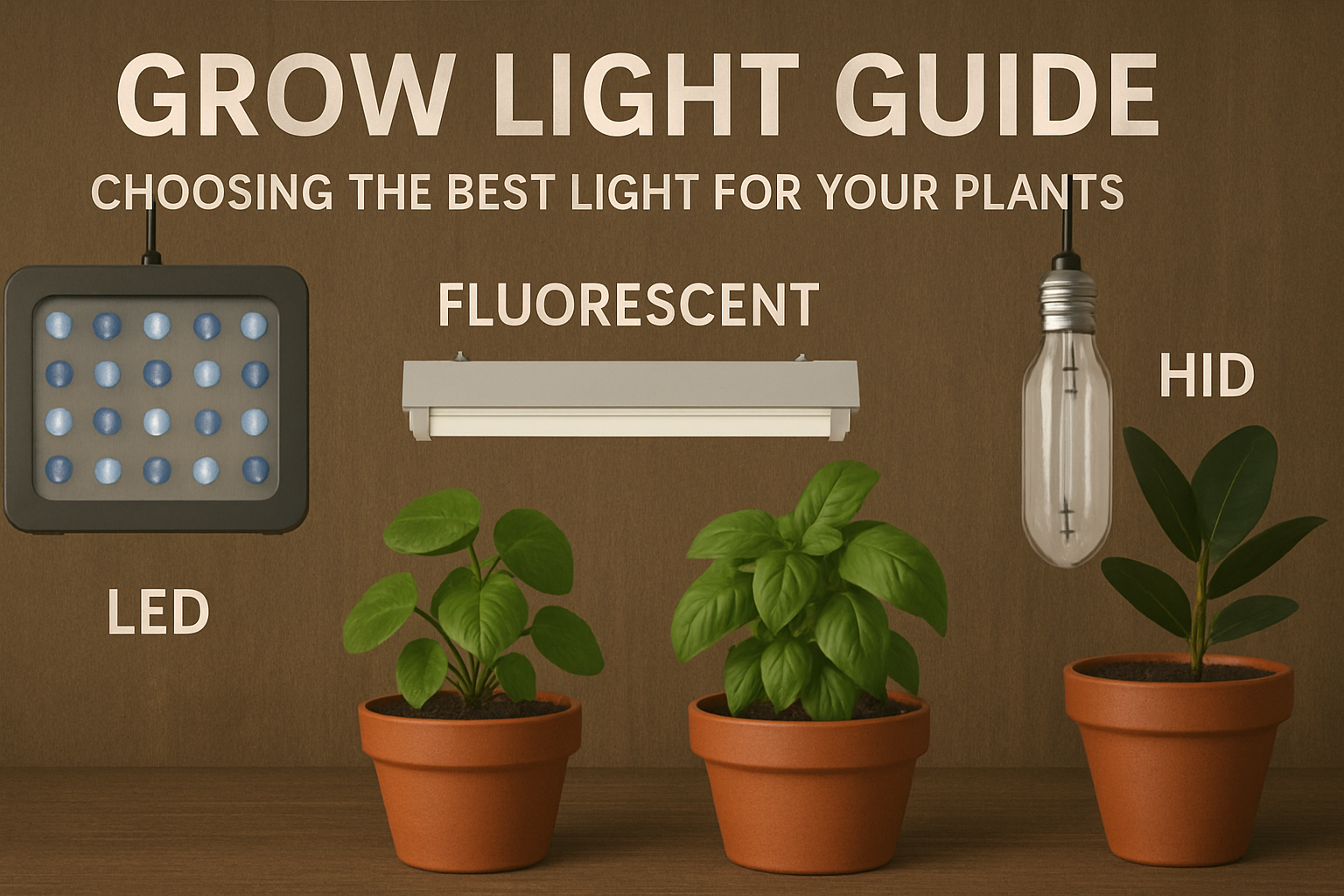
So, you’ve got your grow medium picked out, your seeds are ready, and maybe you’ve even picked a nice cozy corner in your home to get growing, but now you're hit with another decision: What kind of light do your plants need?
Walking into a grow light aisle (or scrolling through one) can feel like decoding alien tech: LEDs, PPFDs, color spectrums, wattage... what does it all mean?
Don’t worry. Whether you’re growing a single basil plant or a jungle of tomatoes, we’re here to shed some light on the subject. Let’s break down the options and help you find the best grow light for your space, your plants, and your goals.
Plants need light for photosynthesis, it's that magical process that turns light into growth. If you're growing indoors (or even supplementing outdoor light), regular household bulbs just won't cut it. Grow lights mimic sunlight, and with the right one, you can control how much and what kind of light your plant babies get all year-round.
Not all light is created equal. Here are a couple of terms you’ll bump into:
Don’t stress about memorizing this. Just know: the better the light matches a plant’s needs, the healthier and faster it’ll grow.
🌟 LED Grow Lights – The Modern Marvel
Best for: Most growers, especially small to medium setups.
LEDs are energy-efficient, long-lasting, and run cool (no plant-frying heat issues). They come in full-spectrum options, meaning you can use them for all growth stages from seedling to harvest.
Why people love them:
✅ Super efficient — lower electricity bills
✅ Little heat — no extra fans needed
✅ Long lifespan (we’re talking years!)
✅ Full-spectrum = one light for the whole cycle
Popular brands include:
👉 AC Infinity (quiet, sleek, grower-friendly)
👉 Spider Farmer (great performance for the price)
👉 Vivosun (widely used by beginners and pros alike)
👉 Grand Master LEDs (premium, pro-grade lighting)
👉 Migro Grow Lights (ultra-efficient with educational resources)
Watch out for: Cheap knockoffs with bad spectrum or weak output. Stick to reputable brands (you don’t have to spend a fortune, but don’t go $12 mystery bulb either).
💡 Fluorescent Lights (CFLs & T5s) – The OG Starter Option
Best for: Seedlings, herbs, leafy greens, or small-scale hobbyists.
Fluorescents have been around for ages and still work great, especially for plants that don’t need intense light. T5s are long tubes; CFLs are curly bulbs you’ve probably seen in home lamps.
Pros:
✅ Affordable and easy to find
✅ Cool temps
✅ Great for starting seeds or clones
Cons:
❌ Not powerful enough for flowering or big plants
❌ Shorter lifespan compared to LEDs
☀️ HID (High-Intensity Discharge) – The Heavy-Duty Option
Best for: Experienced growers with big grow spaces
These include MH (Metal Halide) and HPS (High-Pressure Sodium) bulbs. They’re bright, powerful, and yield beasts, but they also run hot and suck power like a vintage arcade machine.
Pros:
✅ Great for large, high-yield grows
✅ Proven results for flowering
Cons:
❌ Heat: You’ll need fans or AC
❌ Bulky and energy-hungry
❌ More expensive long-term
Some growers still swear by HID setups, but with how far full-spectrum LEDs have come (especially from brands like Spider Farmer and Migro), you might find yourself skipping HID entirely.
It’s not just about the type of bulb, it’s about how much light your plants are getting. Here’s a simple way to think about it:
| Space Size | Light Needed |
| Windowsill / Desk | Small LED panel or CFL bulb |
| 2x2 Tent | 100–200W Full-spectrum LED |
| 4x4 Tent | 400–600W LED or HID (plus ventilation) |
| Grow Room | Multiple LEDs or HID setups |
Tip: Use GroBase to track your light exposure and stages. You’ll get better results when you log how long and how strong your lights are running especially in flowering phases. 🌸
Here’s the quick rundown:
Just starting out? Go with a small full-spectrum LED. Low stress, good results.
Want to grow bigger plants? Upgrade to a larger LED panel or explore HID if you’re ready to handle heat and airflow.
On a budget? Fluorescents still work great for leafy greens and early growth stages.
No matter what light you choose, the key is consistency: stick to a schedule, keep an eye on your plant’s response, and don’t be afraid to experiment.
Your plants are listening... in a photosynthetic kind of way.
📲 Track Your Light Game with GroBase
If you want to keep tabs on your lighting schedule, nutrient feedings, and growth progress all in one place, GroBase has your back.
Log your grow setup, monitor your stages, and even set reminders for when it’s time to flip the lights.
Ready to light it up? Let’s grow. 🌱💡
You need to log in to leave a comment.